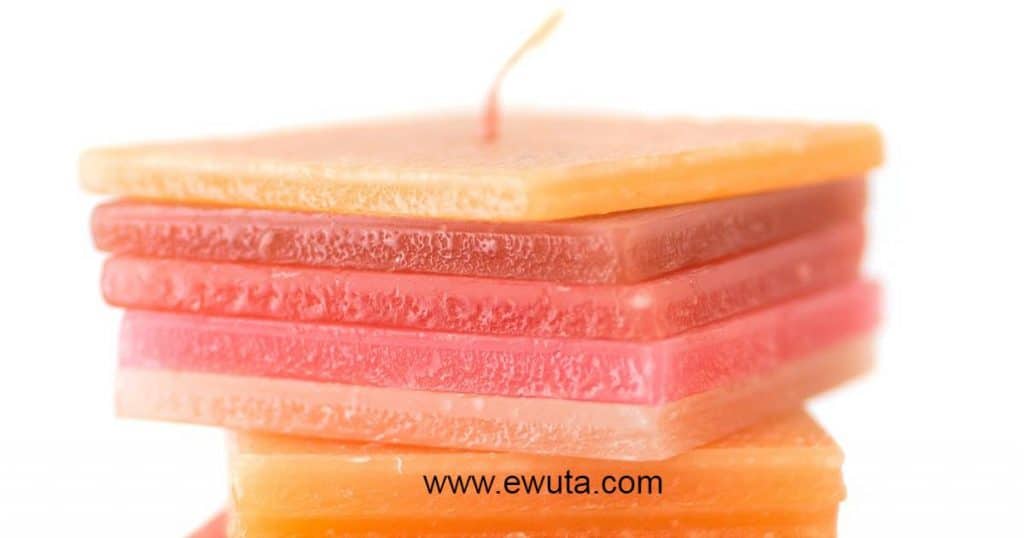The word wax is derived from a word of Anglo-Saxon origin “weax,” which means beeswax. Today the term is used in many different instances and relates to many different kinds of commercial products that may have plant, marine, mineral, or insect origins. The biochemists find waxes to be the thin layers comprising of fatty materials that cover the plant leaves or cover the insect surfaces and animal skin. In all of these compositions, waxes take a form and combination of the long-chain fatty esters and acids. Waxes may also include lipids and higher alkanes.

However, there are specific unique characteristics and properties of waxes. They are lipophilic (dissolve in oil and fats among other non-polar solvents), do not dissolve in water, and are malleable near their ambient temperatures. Plants and animals produce a variety of waxes, and they may be found in petroleum.
5 Unique Uses of Waxes
Waxes are often used in complex formulations, such as coatings, by the industries. They are the plastic colorants, enhance the wear resistance of paints, reduce friction for the inks, and be used to resist corrosion in some cases. We also use waxes in candles, shoe polishes, finish for the wooden products, like wax paper, and as a waterproofing material for fabric and leather. Kids use waxes in their crayons and color pencils, while waxes are also used in mascara, lipstick, and other cosmetics.
Apart from the usual uses of waxes, there are also specific unique, innovative, and relatively newer uses of the substance, which may not be evident to all. Below are some of the unique uses of waxes that you might not have been aware of earlier.
Chewing Gum
The microcrystalline waxes that may be hard or semi-hard and compositions are quite crucial for the manufacturing of chewing gum. Chewing gum manufacturers give a lot of focus and attention to the quality, composition, and strength of waxes in the gums. An appropriate wax composition, quality, and strength ensures that the gum has the right chew and stability. Because chewing gum is a food-grade material, companies also focus on the food ingredient’s quality and specifications to abide by the regulatory norms. Wax is essential to chewing gum manufacturing because:
- It makes the different oils and polymer resins of a formulation more compatible.
- It enhances the plasticity of chewing gum.
- It reduces the dry tack by acting as a release agent.
- It prevents cold flow by making the matrix more solid.
- It has the oil binding capability required for formulating gums.
Chocolates
The shiny coating found in a chocolate bar is due to the coating of paraffin wax. When the wax is melted and added to chocolate, a glossy finish comes to the food product once it hardens. Certain candy bars may also contain paraffin as an additive to prevent it from melting in hand. The wax coating is also found in the cookies, and ice creams dipped in the chocolate. Paraffin wax is also a shiny preservative for vegetables and fruits and can be used in sausages to luster.
Perfumes
Perfume oils are many-a-times diluted in a solvent, which is most commonly alcohol. But apart from the water/rectified spirit and ethanol combination, certain liquid waxes, including jojoba oil, can also be used for manufacturing the perfumes where the waxes act a solvent. It is also now common to use a combination of wax and spray perfume, which ensures that the scent stays with the bearer for a long time. The wax needs to be applied on the dry and clean skin first, and the perfume is later sprayed on the spot.
Lava Lamps
Invented by a British accountant by the name Edward Walker in 1963, the Lava Lamps are made using paraffin wax. Compounds, including carbon tetrachloride, are added for increasing the density. The lamp has wax floating in a liquid that can be mineral oil or even water. Sparkles and dyes are other additions for fanciness and whimsy.
The wax of the lava lamp floats as well as falls, and creates an appealing view. The lamp has a light bulb that heats the wax, which subsequently expands. With the expansion, the wax’s density increases, and it starts to float. However, at the top end that is away from the bulb, the wax cools down. Subsequently, its wax’s density decreases, and it falls back to the bottom. The cycle is repeated again and again.
Beehives
Sometimes bees can also be cultured artificially through the use of artificial hives by the beekeepers. The hive is coated with microcrystalline waxes and paraffin so that the bees do not catch diseases, and the hives last long.
Waxes, including the microcrystalline waxes, provide endless innovation, and some are also safe for the food industry. Reliable suppliers in India offer high-quality waxes to a range of industries at affordable costs.
According to Fortune Business Insights™, the global industrial wax market size was USD 9,539.7 million in 2019 and is projected to reach USD 14,509.5 million by 2027, exhibiting a CAGR of 5.9% during the forecast period.




